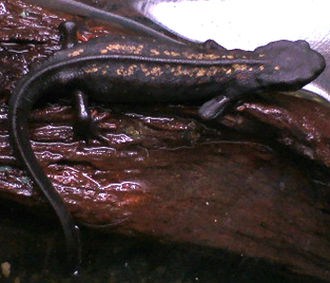Type the name of the breed you're looking for below
[wpdreams_ajaxsearchlite] Don't see the breed your're looking for? Click here and let us know!
Sword-Tail Newt
| Place of Origin and Range | This newt has a very small range and can only be found in some of the southernmost islands of Japan. |
| Description | Females and males look significantly different in appearance. Females have much longer tails that are actually longer than the rest of their bodies. Males’ tails are much shorter and sometimes display a whitish sheen during breeding season. Sometimes, Sword-tail newts are called fire-bellied newts, not to be confused with the common Chinese and Japanese species, because of their bright orange bellies, which serve as a warning to predators that they are poisonous. They can be differentiated from these two species by their large size, broader heads and (against Japanese fire-bellies) smoother skin. This newt ranges from brown to black above, occasionally with an orange dorsal stripe. Some individuals may have light spotting or speckling on their backs. |
| Adult Size | Can grow up to 4 in (10cm) |
| Accommodation | They can coexist in an aquatic environment with small, non-carnivorous fish, as their skin secretes a poisonous substance when the newt is threatened or injured. A semi-aquatic, gently filtered aquarium with live plants, with or without large gravel will suffice. |
| Lifespan | Can live up to 20 years |
| Feeding / Diet | Newts eat worms, insects, wax worms, crickets, and some pelleted fish foods are accepted. Also pieces of lean raw meat will be accepted. |
| Breeding | Breeding places are being frequented by only a fourth of the population that was breeding 14 years ago. This lack of breeding is another key reason for them becoming endangered. Many of their breeding places are in roadside ditches and gutters, which can lead to them being run over. Sword-tail newts are extremely territorial, thus making moving their breeding places difficult. |



